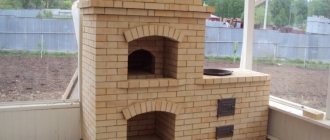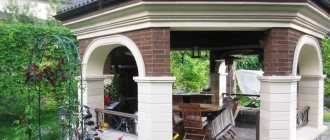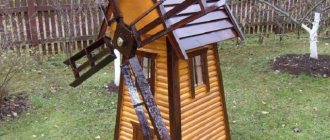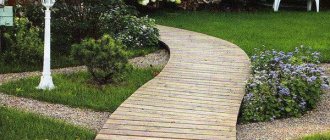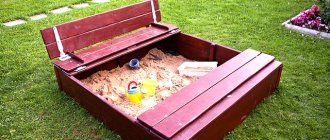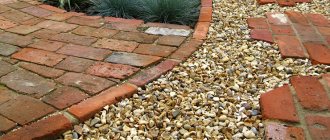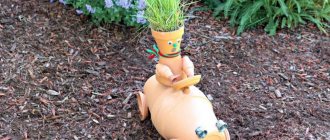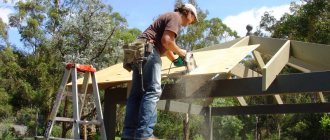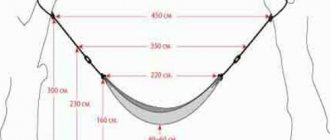Work and research are devoted to the arrangement of landscape space. It is necessary not only to carry out the work carefully, but also to achieve beauty combined with harmony. An important place in landscape design is given to flower beds and lawns. Planting flowers and sowing grass is only half the battle, but making a beautiful brick border for a flower bed is the job.
Brick flower bed border
In order to give the design a finished look, sidewalks and paths are laid out, flower beds and lawns are framed with borders. Fencing can be made from various materials:
- concrete;
- savage stone;
- tree;
- metal;
- plastic.
A construction material such as brick deserves special attention. With its help, it will be possible to obtain an exquisite appearance not only of individual flower beds or flower beds, but also of the surrounding landscape as a whole.
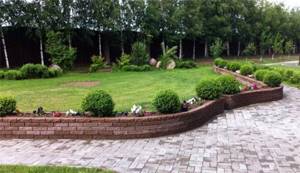
Landscape design and brick border
The main features of brick flower beds
If the fence of a country house is built of brick, you should not bother choosing a material for framing the flower beds. An excellent solution is to make a brick border for a flower bed. It will match the walls of the cottage and complement them harmoniously. The brick edging of paths and alleys looks natural and fits perfectly into the natural landscape.
The main feature of an artificial stone border is its simplicity; even a novice summer resident can handle the construction. By experimenting with texture, various shades, sizes and shapes, you can achieve a sophisticated look for any flower bed. A little imagination and your flower beds will be admired by friends and envied by neighbors.
Immediately before laying out the front garden, it is necessary to decide on the type of structure. It could be:
- multi-level structure;
- dedicated zone;
- elementary flowerbed fencing.
The shape and height for the flower garden is chosen by the owner of the household; it depends only on his fantasies and preferences. The most popular is the round flower bed. It, as the main design element, is placed in the center of the site, and the surrounding design is formed from it. They try to plant the most spectacular varieties of flowers that will create a great impression of the entire estate:
- Roses.
- Hydrangeas.
- Ampelous begonias.
- Gladioli.
- Orchids.
Often a multi-level design is used for the central flower bed. It allows you to show the beauty of the flower garden in the best possible way. Brick is well suited for creating such a structure. Low-growing flowers are planted in the upper floors, while the lower floors are occupied by voluminous flora gifts.
A brick border visually expands the area. The material used is crushed stone. The reception gives the site a certain mystery and romance. In the front garden you can plant low-growing bushes that will complement the overall display.
About plastic borders
It is not for nothing that the use of plastic curbs is considered a universal option for different types of garden plots. Such curbs can clearly attract attention, but they can also be completely unnoticeable and inconspicuous. Let's look at several main advantages of plastic borders:
- one of the main advantages of the “plastic” option is its low price;
- It is known that plastic is resistant to humidity, cold, serious changes in temperature and the effects of chemicals (such substances are often included in plant spraying products and fertilizers);
- the use of plastic curbs makes it possible to create and fix any configuration of garden paths;
- plastic products are traditionally very light, so there will be no problems during delivery and installation;
- most experts consider plastic curbs to be quite durable and strong;
- plastic curbs do not require regular maintenance;
- plastic for making borders is available for sale in a wide variety of sizes, shapes and colors.
There is perhaps only one serious disadvantage to the plastic option - you have to deal with an unnatural synthetic material. However, it should be noted that in the vast majority of cases no harm is caused to people or garden plants.
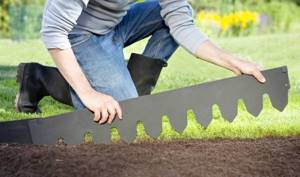
All types of modern plastic borders can be divided into several main categories.
- Let's start with the curb, presented in the form of a flexible continuous tape (on a roll). After installation is completed, the main part of the structure is underground. Such borders are almost invisible from the outside, so they are successfully used as a frame for paths and alleys made in different styles. The flexible plastic tape is guaranteed to cope with its main functions: it will prevent weeds from sprouting and will not allow the path to “creep”. It is clear that a curb of this type cannot be decorative.
- Let's move on to the next option - sectional borders. Each section is equipped with a number of auxiliary parts that greatly facilitate installation. As a result, you can install a beautiful multifunctional curb.
- Another popular solution is to purchase ready-made borders of a certain configuration. Such products are often produced in the form of imitation tiles, boards and other materials.
To install plastic curbs, special anchor-type pins are most often used. Depending on the type of soil in a particular area, a choice is made in favor of one type of pin or another. If we are dealing with rocky soil, it is better to use metal pins, if the soil is soft, wooden ones.
We do not recommend using plastic borders when decorating paths and alleys with a stone base.
Advantages and disadvantages
The most popular framing of flower beds in country and suburban areas gradually became a brick border. Compared to other types, this design has significant advantages:
- An excellent landscape solution.
- The diversity of design.
- Possibility of ideal zoning of the estate space.
- The versatility of the material fits well into any architectural style.
- Low cost of bricks.
- Ease of construction.
- Strength and durability of the structure.
- Barrier to weed growth.
The only drawback of a flowerbed with a brick border is the consistency of its shape. Once built, it remains in this place forever; moving a flower garden to another area is troublesome and impractical.
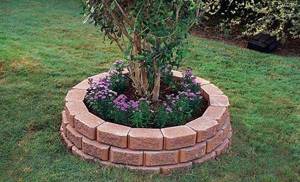
About concrete curbs
Curbs made of concrete are a universal and proven solution for fencing garden paths of any type (in particular, we are talking about asphalt, paving stones, paving slabs, stone, concrete).
Let us list the main advantages of choosing concrete curbs:
- they can be made in-house;
- they are very easy to care for;
- their cost is low;
- they are resistant to moisture and sunlight, are not afraid of serious and sudden temperature changes, and can easily withstand severe frost and extreme heat;
- They are exceptionally strong and durable.
The disadvantages of this option include the serious weight of concrete products. It also needs to be said about the labor-intensive and rather lengthy process of preparing the soil for installing concrete curbs
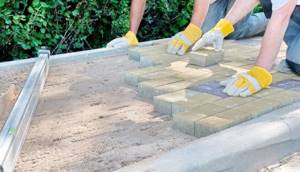
Concrete curbs are very heavy, therefore the preparatory stage of work will be of the greatest importance - how durable the entire structure will be will depend on the effectiveness of its implementation.
First of all, it is necessary to dig ditches (depth 20 centimeters), lay a layer of crushed stone at the bottom of each of them, which will then be compacted and covered with sand. A layer of sand is filled with water and also compacted in the most thorough manner. Next, you can begin pouring the cement mortar. We immerse all the components of the curbs in the solution. We level the sections using a special rubber hammer. We recommend filling the joints with the remaining solution.
Installation of curbs can be carried out simultaneously with the installation of the paths themselves.
The second popular method of installing concrete curbs is associated with the installation of a formwork structure. This approach will allow preparatory work to be completed faster, however, curbs installed in this way will not be as aesthetically pleasing.
Of course, we begin the work process with the preparation of trenches (the depth and width must be calculated in advance). Next we move on to installing the formwork. The material for this design can be steel, MDF, plastic or sanding board. We fix the formwork structure with pegs, and then fill it with the required amount of cement mortar.
The next step is leveling the surface. Then, after the solution has set, we remove the formwork structure and cut the required number of expansion joints (1-1.5 meter interval) in order to prevent cracking.
While the concrete is hardening, you can add pebbles, mosaics or pieces of ceramic tiles (as decoration).
We will continue our conversation about different types of garden borders in the next article in this section.
How to do
The first stage in any construction is determining the location of the flower bed. The process is creative. The owner of the plot will quickly find a place for a flower bed. It is important not to miss the main points:
- Access to sunlight. Most flower plants are light-loving, so the flowerbed should be located away from shady areas.
- General overview. The flower garden is the highlight of the site; it is advisable to place it in a central place accessible for viewing.
- The contents of the flowerbed should be bright throughout the season. You need to think about the order of planting plants in order to get a constantly blooming front garden.
The next stage is determining the shape of the flower bed. The variety of forms is conditionally united into groups:
- Round or island. They are placed in a central location and filled with annual plants or spreading shrubs.
- Square ones are usually located at the edges of seating areas.
- Rectangular, in the form of a ridge, placed on two sides of the patio. This design creates a visual effect of increasing the estate.
- Multi-stage ones occupy a small yard area. A cascading flower garden looks impressive and can decorate any garden design.
Before you make a border for your chosen flower garden, you need to stock up on the necessary tools and materials. For construction you will need:
- Brick.
- Sand.
- Cement.
- Bayonet and shovel.
- Milestones.
- Fishing line or thin rope.
- Hammer or small sledgehammer.
Once the nuances have been taken into account, you can begin building a flowerbed with a brick border with your own hands.
Advantages, disadvantages and types used
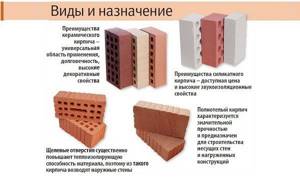
The following speaks in favor of building a walkway from used bricks:
- the opportunity to free the territory from the remains of construction;
- cheapness;
- ease of installation, allowing you to perform the necessary work without the involvement of professionals;
- environmental friendliness;
- good drainage properties;
- ease of dismantling if necessary and quick restoration of the surface of the area.
However, with all this, brick is mostly a wall material, which means that in the open air it will collapse, exposed to moisture and frost. To extend the life of a broken brick walkway, it is recommended:
- if possible, use sand-lime brick;
- treat the stones with a hydrophobic solution or waterproof varnish;
- if clay bricks are used, then before laying the bricks should be treated with a hydrophobic solution twice, immersing each fragment in the solution.
The purpose of this treatment is to give the stone frost resistance and moisture resistance.
The validity period of the water repellent is 5 years, at the end of this period the treatment must be renewed. When paving a garden path with your own hands, simple installation methods are recommended:
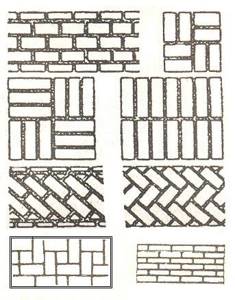
- longitudinal layout;
- transverse layout with seams located perpendicular to the direction of the track;
- chaotic layout (in the presence of multi-colored elements) with any method of laying relative to the direction;
- herringbone laying, when the paving elements are located at right angles to each other, with the pattern often oriented along the direction of movement;
- braiding (a pattern imitating weaving is formed by alternating longitudinal and transverse elements);
- alternating horizontal and vertical lines.
It is easiest to lay rectangular stones in straight areas and along the curb. In curved areas, laying is done using wedge-shaped seams. If desired, you can create a spectacular pattern from small fragments and whole bricks. If the old bricks used are of different shades, this will also help create an interesting compositional solution for the path.
Installing a curb: preparing the trench
The construction of the structure is divided into several stages, the main ones being: marking - trench - base - curb.
Work order:
- Milestones are driven into the corners and the fishing line is pulled, marking the outline. This method is suitable for marking a flower bed with a strict geometric shape, for example, a square or a honeycomb. Structures with curved lines are easier to mark using a watering hose or medium-weight rope.
- A trench 15–20 cm deep and 22–25 cm wide is prepared along the marked contour.
- Mix the cement mortar in a ratio of 1:3.
- Foundation device.
- Leave for three days to harden and harden.
How to install a sawtooth garden border made of brick or square paving stones ↑
Step 1. Stick stakes in the corners of the flower bed and stretch the twine around the entire perimeter. This is necessary to ensure that your trench is level.
Step 2. Dig a trench along the rope about 20 cm wide and 10 cm deep and then raise the level of the stretched string to the height of half a brick.
Step 3. Place some cement mortar at one end of the trench and lay the first brick on top of it at a 45° angle. Let the cement set a little. After that, put a little mortar on its lower half and press the second brick closely so that its upper edge is exactly in the middle of the long side of the first brick. In this case, the solution will not only fix them together, but will also fill the void underneath, thereby creating support at an angle of 45°.
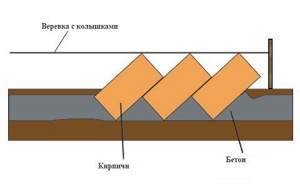
Without concrete, such a structure will quickly collapse under the influence of water or voids in the soil. To make the job easier, you can mark the middle of the long side of each brick, then laying the marks will be more accurate, and the fence will look even and neat.
Step 4. Wait for the concrete to dry, and only then fill the trench with soil so that only the ribbed solid border is visible on the surface. Level the soil and you're done!
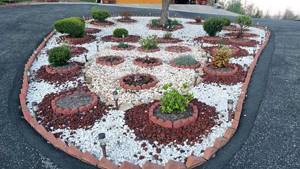
Installing a border: laying bricks
After the foundation gains the necessary hardness, all that remains is to lay out the brick:
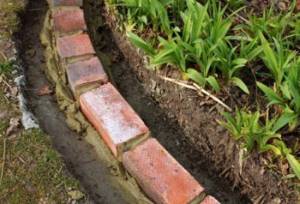
The process of laying a brick border
- Laying is carried out on the finished base with M50 cement mortar. The stone can be placed along the border of the flower bed, transversely or diagonally. If a lawn mower is used on the site, it is necessary to maintain a distance of 10 cm from the lawn.
- The curb is fixed by filling the remaining space with mortar to ground level. The flowerbed is covered with fertile soil.
Using the same algorithm, a border is installed along garden paths and sidewalks on the estate. A two-row design would be an excellent solution.
The use of brick as a border for the construction of fencing flower beds, flower beds, alpine slides and rose gardens, and decorative zoning of recreation areas has become widespread due to the durability of the structure. Having spent a little time on arranging the site, the owner receives a magnificent surrounding landscape that will be the envy of friends and neighbors.
The financial side is of great importance. Costs are minimal. Materials, as a rule, remain after the construction of the cottage. Their consumption is insignificant, from 1 cubic meter. m of brick can be laid up to 100 meters of border. Structures made of metal, wood and plastic are not as reliable as brick. Their service life is much shorter and they require constant maintenance.
To summarize, we can conclude that a flowerbed with a brick border is beautiful, durable and inexpensive. It is enough to build flower garden fences once to admire flower arrangements in an ideal frame for many years to come.
Other ideas for a brick garden
This stone can also be used for other purposes. For example, patio areas decorated with brickwork on the floor look great. The principle of creation is practically no different from laying garden paths. Only here you need to delimit the territory in advance.
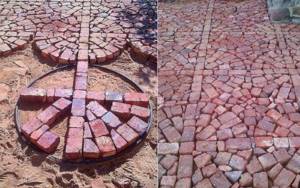
Brick can be used to lay an original platform in the garden or patio
It’s also a great idea to make a brick sculpture that can be filled with water, which will serve as a wonderful decoration for the garden area.
Old bricks in the garden that are not suitable for re-building can serve as an excellent sign to indicate the names of plants. Using a black marker, you can write the names of crops planted in certain areas. This will allow you to understand in the spring, when the greenery has not yet sprouted, what has been planted and where.
Brick frames for plant protection also look great. They serve as a certain insulator, which limits the sun's rays and provides an optimal microclimate for growing certain garden crops. To create it, you will need to build a brick structure of the required height, and then cover it with a glass panel on top.
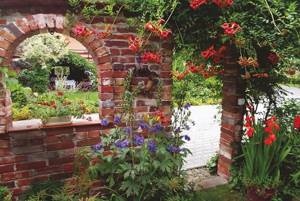
A decorative brick wall in the garden will look very beautiful. It can be used to separate parts and be used for the entrance area in front of a recreation area, for example. On top of such a structure you can plant climbing plants, for example, wild grapes or ivy. This solution looks like it will be as effective as possible.
